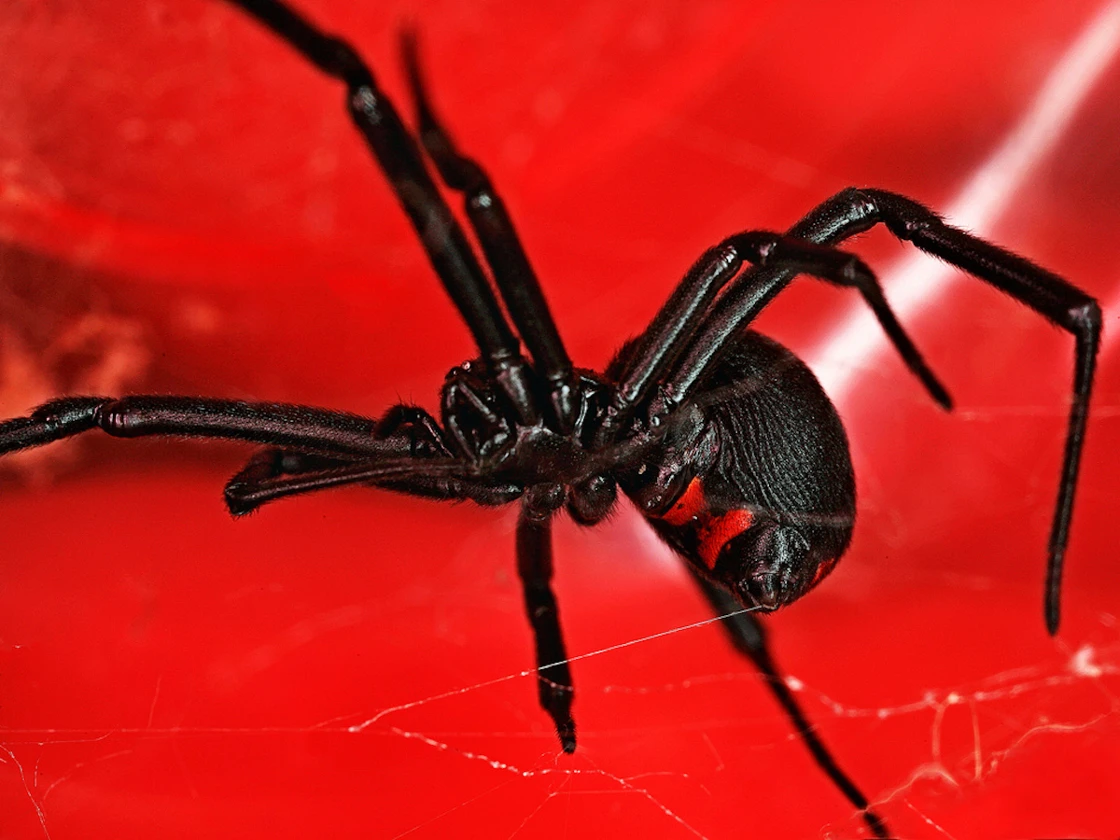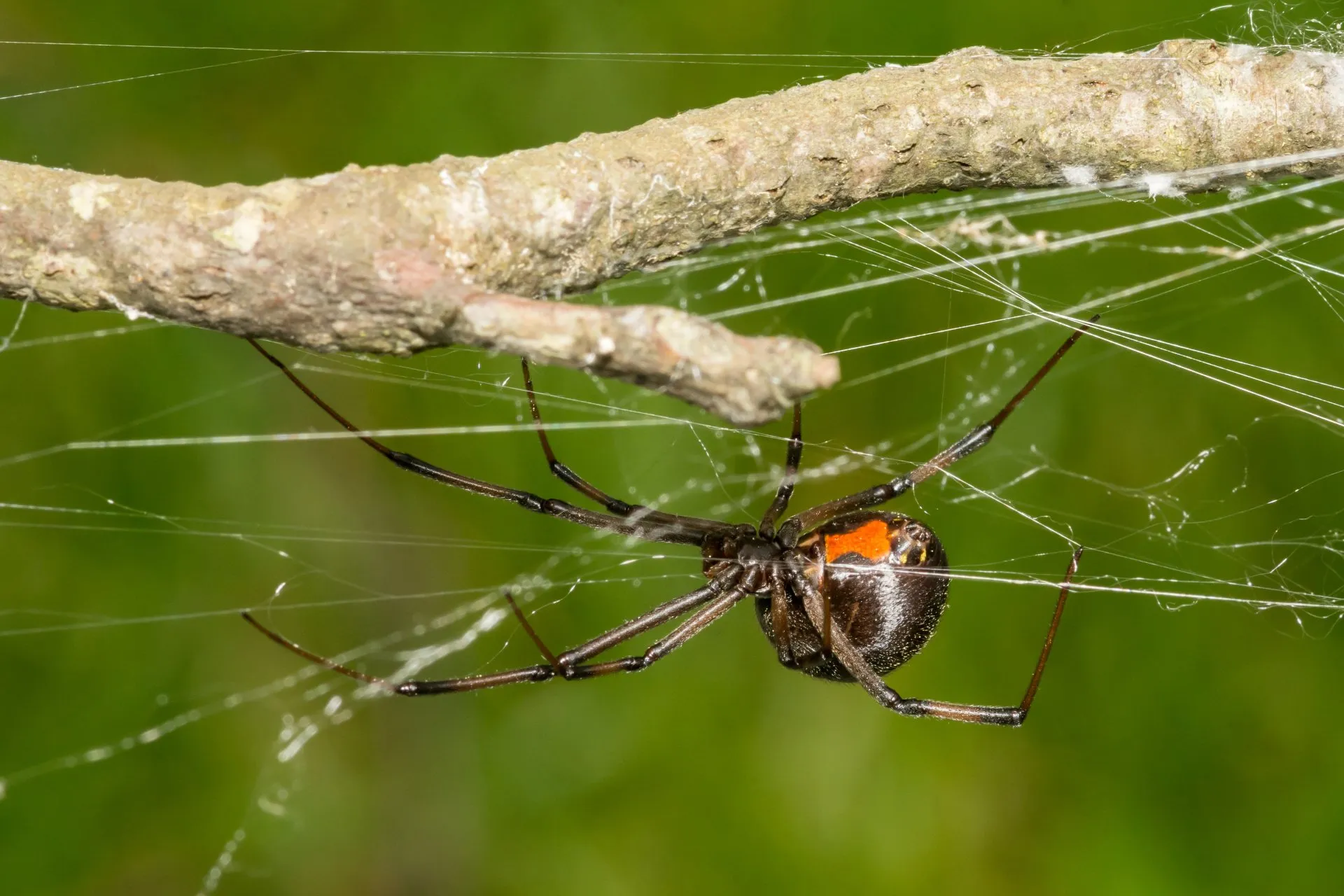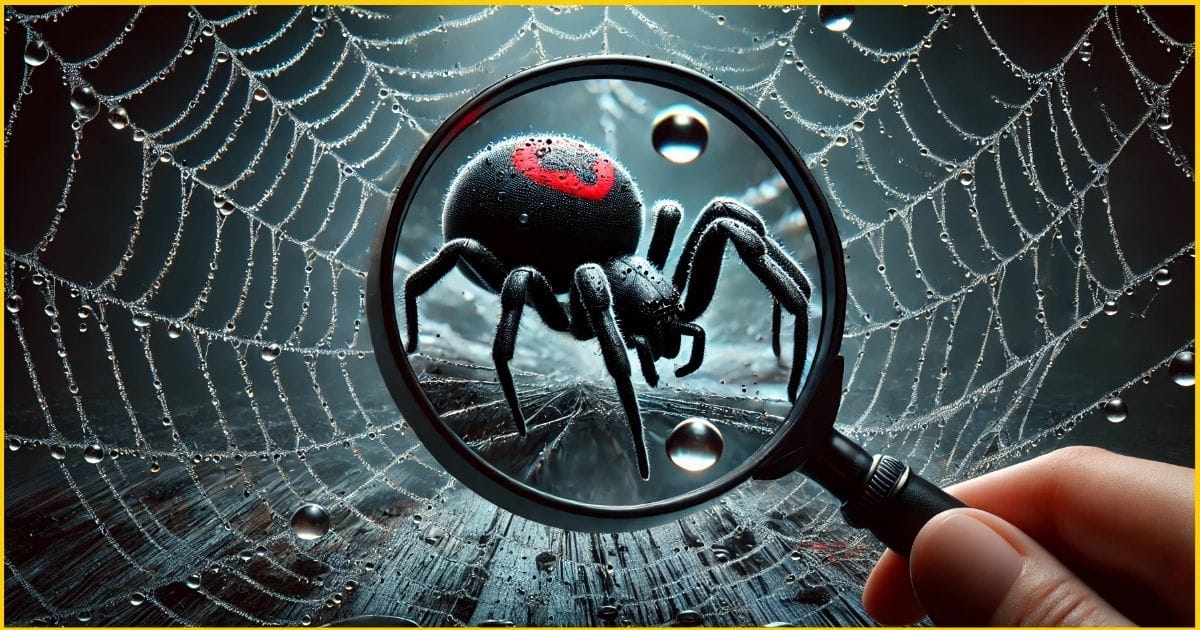Black widow spiders are one of the most well-known arachnids globally and very common in the United States, recognized for their powerful venom and unique appearance. It’s essential to know “how to identify a black widow spider” for your safety and reassurance. This guide will provide you with all the necessary information to identify black widow spiders, understand their behavior, and learn what to do if you come across one.
Table of Contents
- Introduction to Black Widow Spiders
- Physical Characteristics of Black Widow Spiders
- Habitat and Behavior
- How to Identify a Black Widow Spider
- Common Misidentifications
- Safety Precautions
- What to Do If You Find a Black Widow Spider
- Frequently Asked Questions
- Conclusion

Introduction to Black Widow Spiders
Black widow spiders (Latrodectus spp.) belong to a group of spiders famous for their strong venom, which is 15 times more potent than that of a rattlesnake. Nevertheless, in spite of their daunting reputation, black widows are typically shy and non-aggressive. They will bite only when they will feel threatened, and deaths from bites are uncommon due to the existence of antivenom.
There are various species of black widow spiders, but the Southern black widow (Latrodectus mactans) is the most common in the United States. Other species include the Northern black widow (Latrodectus variolus) and the Western black widow (Latrodectus hesperus).
Physical Characteristics of Black Widow Spiders
Black widow spiders are easily recognizable due to their distinctive appearance. Here are some key physical characteristics to look for:
Color and Markings
- Females: Adult female black widows are shiny black with a distinctive red hourglass-shaped marking on the underside of their abdomen. Some females may also have red or white spots on the top of their abdomen.
- Males: Male black widows are smaller, lighter in color, and often have red or pink spots on their backs. They lack the prominent hourglass marking found in females.
- Juveniles: Juvenile black widows are typically brown or gray and develop their characteristic black color and red markings as they mature.
Body Shape and Size
- Females: Female black widows have a round, bulbous abdomen and are about 1.5 inches long, including their legs.
- Males: Males are smaller, with a more elongated abdomen, and are about half the size of females.
Web Characteristics
Black widow spiders build irregular, tangled webs, often in dark, secluded areas. Their webs are strong and sticky, designed to capture prey. You may find their webs in garages, basements, woodpiles, and other undisturbed areas.

Habitat and Behavior
Black widow spiders prefer warm climates and are commonly found in the southern and western United States. They thrive in dark, undisturbed areas such as:
- Garages and Sheds: These spiders often build their webs in corners, under shelves, or behind stored items.
- Woodpiles: Black widows are frequently found in woodpiles, where they can hide and hunt for prey.
- Basements and Crawl Spaces: These areas provide the dark, secluded environment that black widows prefer.
- Outdoor Structures: Black widows may also be found in outdoor structures like sheds, barns, and under eaves.
Black widows are nocturnal hunters, meaning they are most active at night. During the day, they typically remain hidden in their webs or retreat to a secluded spot.
How to Identify a Black Widow Spider
Identifying a black widow spider involves looking for specific physical characteristics and behaviors. Here’s a detailed guide to help you accurately identify these spiders:
Color and Markings
The most distinguishing feature of a black widow spider is the red hourglass-shaped marking on the underside of the female’s abdomen. This marking is usually bright red or orange and is a key identifier. However, not all black widows have this exact marking. Some may have a series of red spots or a broken hourglass.
Body Shape and Size
Female black widows have a round, bulbous abdomen, while males have a more elongated shape. Females are larger, measuring about 1.5 inches in length, including their legs. Males are significantly smaller, often less than half the size of females.
Web Characteristics
Black widow webs are irregular and tangled, often found in dark, secluded areas. The silk is strong and sticky, designed to capture prey. If you find a web in a dark corner of your garage or basement, it’s worth taking a closer look to see if a black widow is present.
Behavior
Black widows are generally shy and non-aggressive. They prefer to retreat rather than confront a threat. However, if they feel threatened or cornered, they may bite in self-defense. Observing their behavior can also help in identification.
Common Misidentifications
Several other spiders are often mistaken for black widows due to similar coloration or markings. Here are some common misidentifications:
- False Black Widow (Steatoda spp.): These spiders are often mistaken for black widows due to their similar size and color. However, false black widows lack the red hourglass marking and have a more brownish coloration.
- Redback Spider (Latrodectus hasselti): Found in Australia, the redback spider is closely related to the black widow and has a similar appearance. However, the redback has a more distinct red stripe on its back.
- Jumping Spiders: Some jumping spiders have black bodies with red or orange markings, but they are much smaller and more active than black widows.
Read this article for more interesting information: 3 Spiders That Look Like Black Widows II You Should Know
Safety Precautions
While black widow spiders are not aggressive, their venom is potent and can cause serious health issues. Here are some safety precautions to take if you live in an area where black widows are common:
- Wear Gloves: When working in areas where black widows may be present, such as garages, basements, or woodpiles, always wear gloves to protect your hands.
- Shake Out Clothing and Shoes: Before putting on clothing or shoes that have been left outside or in storage, shake them out to ensure no spiders are hiding inside.
- Use a Flashlight: When working in dark areas, use a flashlight to check for spiders and their webs.
- Keep Areas Clean: Regularly clean and declutter areas where black widows may hide, such as garages, basements, and sheds.
What to Do If You Find a Black Widow Spider
If you encounter a black widow spider, it’s important to remain calm and take appropriate action:
- Do Not Disturb: Avoid disturbing the spider, as this may provoke a defensive bite.
- Contact a Professional: If you find a black widow in or around your home, contact a pest control professional to safely remove it.
- Seek Medical Attention: If you are bitten by a black widow spider, seek medical attention immediately. Symptoms of a black widow bite may include severe pain, muscle cramps, nausea, and difficulty breathing.
Frequently Asked Questions (FAQs)
Q1: Are black widow spiders deadly?
A: While black widow spiders are venomous, fatalities are rare. Most bites result in pain and discomfort, but antivenom is available and effective.
Q2: Can male black widow spiders bite?
A: Yes, male black widow spiders can bite, but their venom is less potent than that of females. Bites from males are generally less severe.
Q3: How can I prevent black widow spiders from entering my home?
A: To prevent black widow spiders from entering your home, seal cracks and crevices, keep areas clean and clutter-free, and use insect screens on windows and doors.
Q4: What should I do if I’m bitten by a black widow spider?
A: If you are bitten by a black widow spider, seek medical attention immediately. Clean the bite area with soap and water, and apply a cold compress to reduce swelling.
Q5: Are black widow spiders aggressive?
A: Black widow spiders are not aggressive and will only bite in self-defense. They prefer to retreat rather than confront a threat
Conclusion
Identifying a black widow spider is essential for your safety and peace of mind. By understanding their physical characteristics, habitat, and behavior, you can accurately identify these spiders and take appropriate precautions. Remember, black widows are generally shy and non-aggressive, but their venom is potent, so it’s important to handle encounters with care.
If you suspect you have black widow spiders in or around your home, contact a pest control professional for safe removal. By staying informed and taking preventive measures, you can reduce the risk of encountering these spiders and ensure a safe environment for you and your family.
